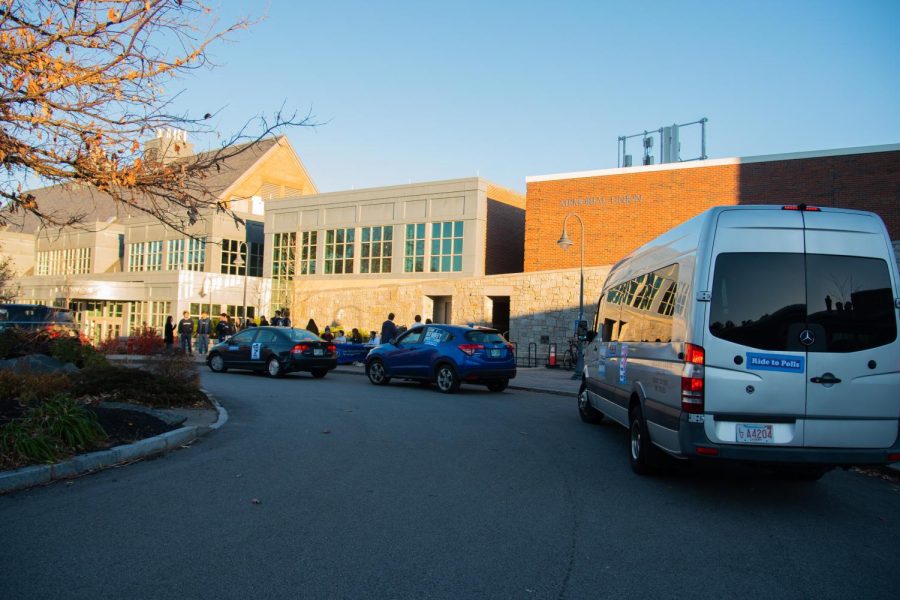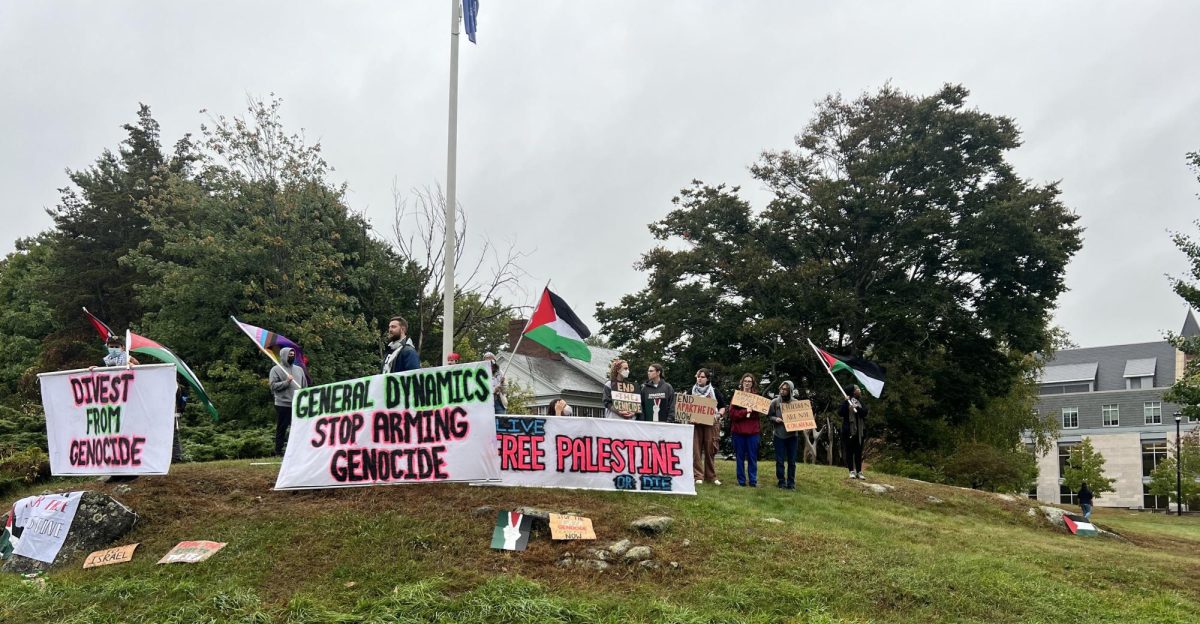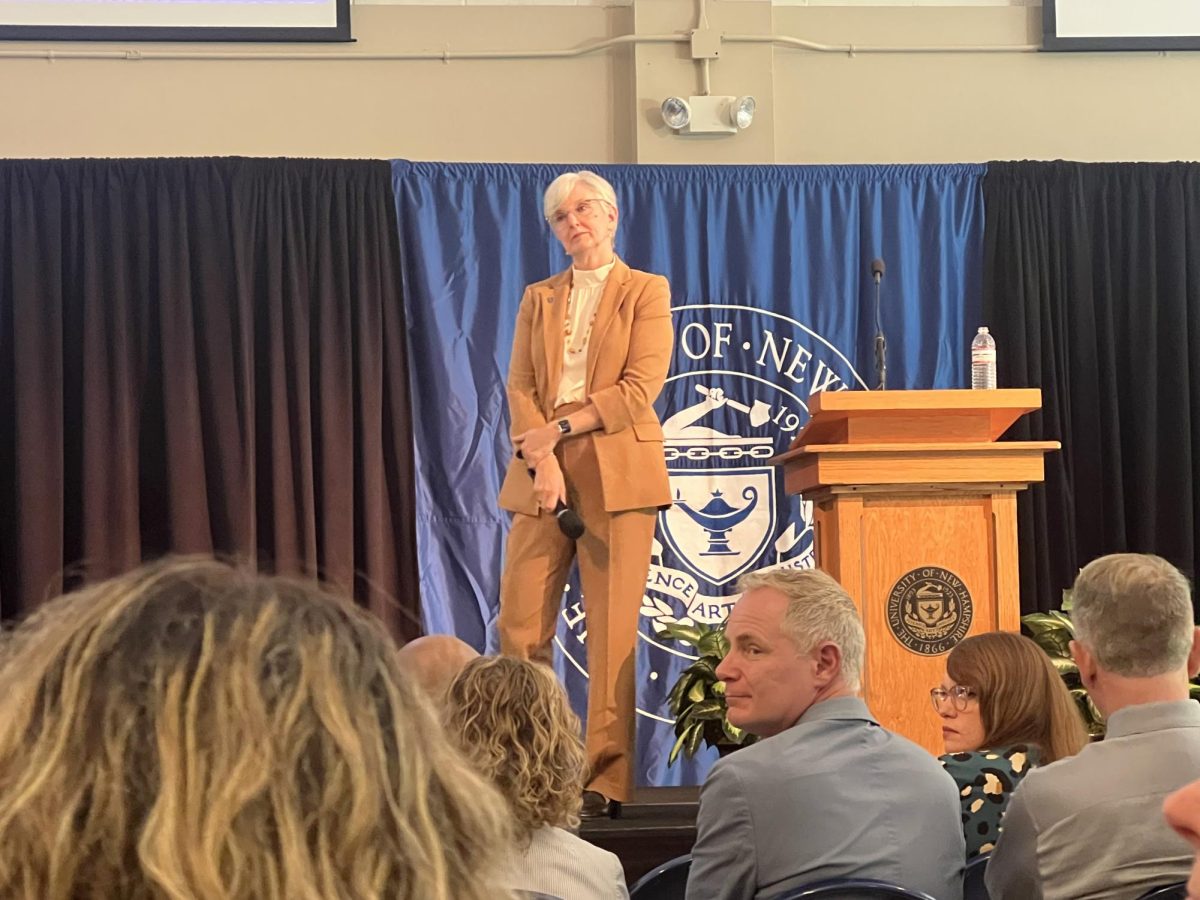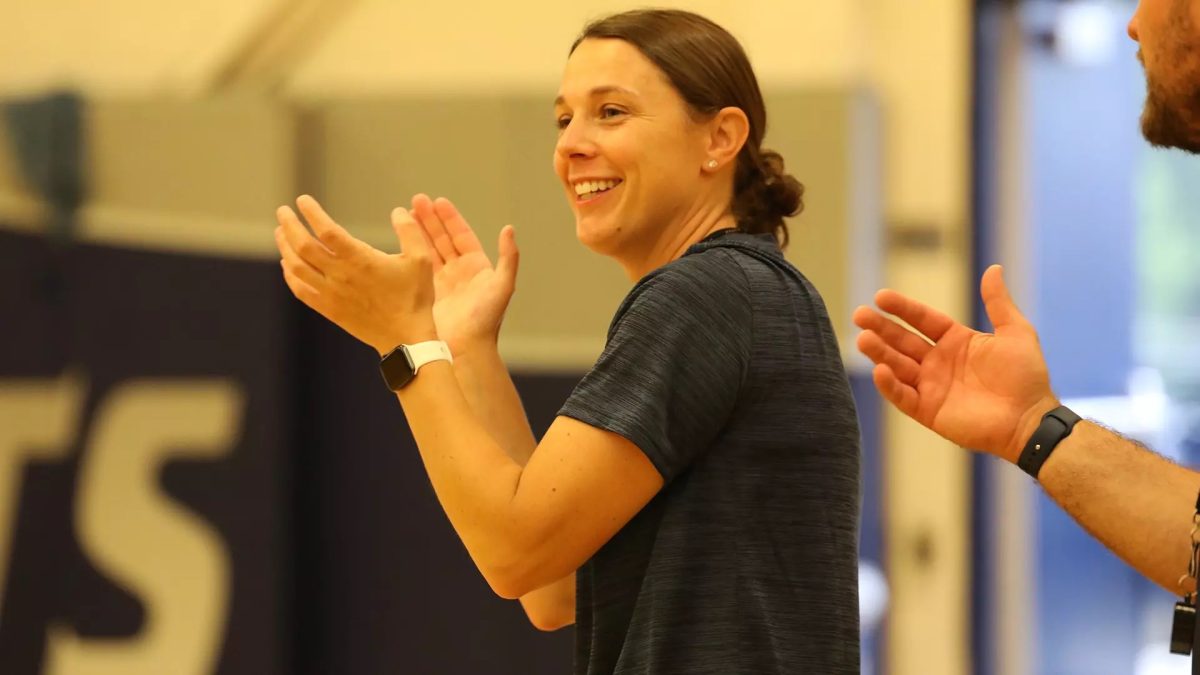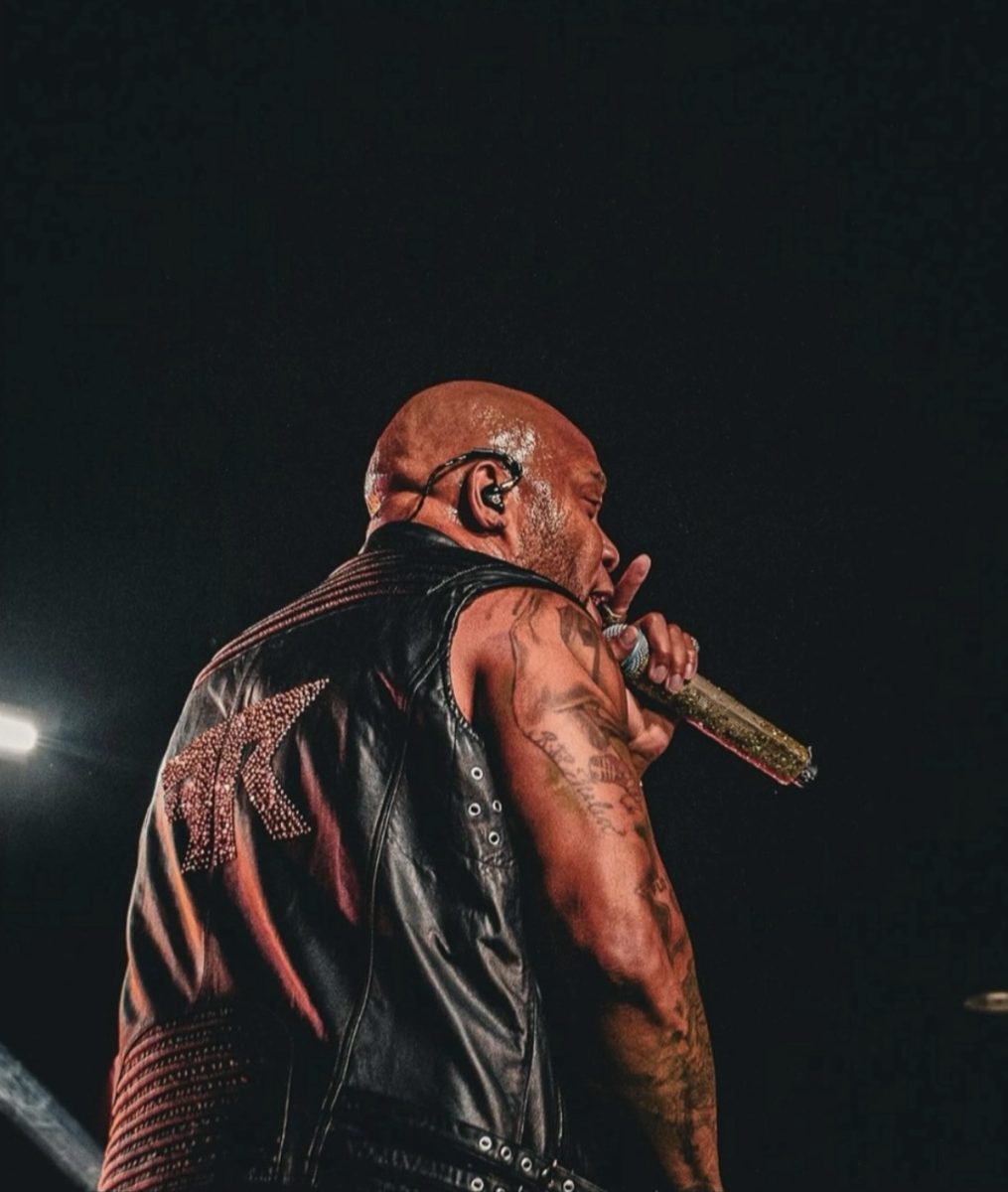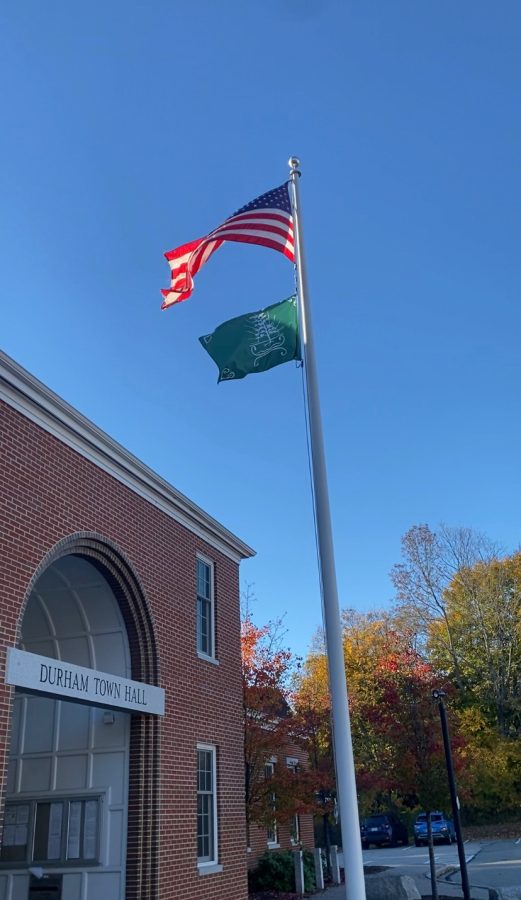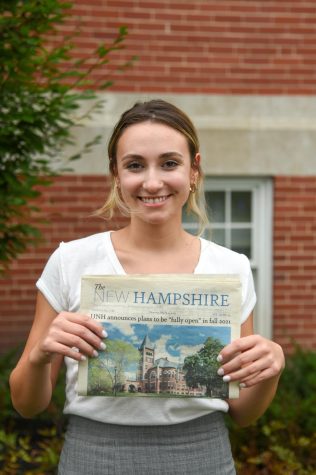Durham Honors Indigenous Peoples’ Day
November 7, 2022
DURHAM, NH- The University of New Hampshire (UNH) and the Durham community honored Indigenous Peoples’ Day this past October with the flying of the flag of the Cowasuck Band of the Pennacook-Abenaki People outside town hall, as well as naming UNH trails to honor the Abenaki heritage local to Durham.
Paul and Denise Pouliot, head speakers of the Cowasuck Band of the Pennacook-Abenaki People, presented the flag to the town of Durham last October in honor of the town adopting Indigenous Peoples’ Day. Denise said they gifted the flag to the town council so the town of Durham could raise an indigenous flag in celebration of the local tribe.
“We’ve been donating the flags to the towns that we’re aware have adopted Indigenous Peoples’ Day so that they had the flag to fly if they chose,” said Denise Pouliot. When asked about Pouliot’s thoughts on Durham hanging the flag throughout October, she said “I think it’s fantastic. We’re all about education, and helping the spread of information that the indigenous population not just was here in the past but is still here today I think just betters the community at large.”
Todd Selig, Durham town administrator and member of the Durham Human Rights Commission, said that they reached out to Paul and Denise Pouliot in hopes to fly the flag. Selig said that Durham was the first community in New Hampshire to adopt Indigenous Peoples’ Day, and their close relationship with the Pouliot’s and the Indigenous New Hampshire Collaborative Collective (INHCC) played a big part in that. Selig said that in recognizing Indigenous Peoples’ Day, it’s important to recognize the indigenous history that comprised the land for thousands of years in what is now called Durham.
“We just felt that it was important to recognize that, and to celebrate that locally,” which is exactly what flying the flag for the month of October hopes to achieve.
The background of the flag of the Cowasuck Band of the Pennacook-Abenaki People is dark green to represent the white pines of the forest. In the Abenaki language, the image on the flag in white is W8bi, the root word for the Wabanaki; “The People of the Dawnland.”
The image in the center is of a white pine tree, directly referencing the Cowasuck Band- “The People of the White Pines.” Symbolizing the three main watersheds of New England, the white pine tree has three roots symbolizing the Merrimack, Connecticut and Piscataqua rivers.
In the background is the “Raising Sun,” referencing the Wabanaki Confederation. From the sun there are 13 rays that represent the Indigenous year cycle of 13 moons. Symbolizing the land between the sky and waters is a horizontal line beneath the white pine tree. The two “Curls” represent “Canoes.” In combination, the two curls come together to become a “Wisdom Curl.” In all four corners of the flag, there are modified curls that represent family units, “in balance throughout N’dakinna- “Our Homelands.””
A close colleague of the Pouliots’, Meghan Howey, is an archeologist, interim center director and Center for the Humanities professor at UNH. Howey’s most recent project is “one of the most significant sites in New England.”
Located near Great Bay, under a British homestead, is a “Native American village site that was occupied from 1200 A.D right up and through European contact, so up to 1680, so it’s contemporary with English,” said Howey.
“So essentially we have evidence of English and native people living side by side in the 1600s in Durham,” Howey continued.
This is of great significance, as there is a narrative that the English and Native American people did not coexist – that there was only fighting and aggression. This did occur in history, but Howey’s main goal of this project is to shift the narrative of a one-sided view, to shed light on the full picture.
“Those narratives are really missing a critical time that these early decades were much more complicated and that story’s really erased in these narratives of violence,” she said.
Native artifacts found by archeological digging at the site near Great Bay show that native people and English coexisted. Native arrowheads found at the site were made on English flint, as well as evidence of the diets of English shifting from sheep, to moose, seal, and passenger pigeon found in the archeological record in the British home. Howey said this is a key part of her research as this is not the typical story of the early settlement of the area.
“There’s years of something different going on in what our research shows.” “I think it’s trying to tell the real story,” said Howey.
Alexandra Martin, faculty fellow of anthropology at UNH, was a head facilitator of the project in naming the UNH trails in honor of the Abenaki land and heritage that UNH sits on. In collaboration with the Indigenous New Hampshire Collabortive Collective (INHCC), and the Cowasuck Band of the Pennacook-Abenaki People, the project began in 2019. With the help of every dean’s office, the input of the graduate student senate, undergraduate student senate and working with the office of Community, Equity and Diversity, the project was a collaboration of many organizations across campus and beyond to get the project off the ground, the signs being installed at the end of September.
An American Council for Learned Societies grant was part of the funding for the project that INHCC was a beneficiary of through the Center for the Humanities. Further information on the funding for the project can be found on UNH Today, “Pathway to Paying Tribute.”
Alix said that there is an indigenous tradition of naming based on landmarks, specifically in wayfinding. She said that the trail naming was inspired by the physical features of the land in the College Brook ravine area. Alix mentioned that wayfinding was an essential part of the project of putting up the signage as the trails were previously unnamed. Under each trail sign, there is a QR code that is linked to a page with Abenaki pronunciations of the trail names, and historical information.
“We took that tradition of acknowledging landscape features, wayfinding, and the hope that they could be educational,” said Martin.
“We thought and hoped that by bringing some awareness to the landscape it would be a good reminder and hopefully a first step in getting people to think about the land and about land ownership, in combination with land stewardship.”
Pat Hussey, a third-year student at UNH, got involved with the Abenaki trail naming project when taking a class with Professor Martin. He has Mi’kmaq ancestry, as his mom and grandmother are recognized members of the tribe. Hussey said that he was encouraged by his family to explore his ancestry as he really is “part of the puzzle.”
“I think the naming of these trails and these markers are a way of showing we have an identity on this campus, we have a place on this campus that’s instinctually and indefinitely ours,” said Hussey.
He said that this is a time when people can look back on and reflect, which might help others not of the same ancestry learn more about other identities than their own.
By honoring the Abenaki land with the naming of trails in Abenaki, and flying the flag of the Cowasuck Band of the Pennacook-Abenaki People, Durham hopes to have brought more visibility and recognition of Durham’s indigenous past, and present.

